Retro Replay Review
Gameplay
Throne of Fire introduces a fast-paced slash ’em up experience that pits up to two players against each other in a deadly race to control the castle. You choose one of three rival princes—each with slightly different speed and attack patterns—and set out to carve a bloody path through doorways and corridors. The side-by-side split-screen display keeps both players constantly in view, intensifying the competition as you vie for dominance in each room.
(HEY YOU!! We hope you enjoy! We try not to run ads. So basically, this is a very expensive hobby running this site. Please consider joining us for updates, forums, and more. Network w/ us to make some cash or friends while retro gaming, and you can win some free retro games for posting. Okay, carry on 👍)
The core loop revolves around navigating a scrolling castle display at the bottom of the screen. You select coloured windows that indicate which prince currently holds a given chamber, and the view then shifts to a first-person perspective of that room. Exits to the left, right, and forward (which may lead up or down the castle’s floors) reveal fresh challenges, from trap-strewn hallways to ambushes by the rival princes. This method of map traversal feels tactile and strategic—every choice could lead you closer to the throne or straight into your brother’s blade.
Combat is delightfully brutal. Each slash and thrust feels weighty, and the neat death animation—complete with blood dribbling down the screen—underscores just how high the stakes are. Duke-style combos aren’t on offer, but timing your strikes, blocking effectively, and anticipating your brother’s movements all come together in a satisfying dance of steel. The tension ramps up in two-player matches, where sudden reversals of fortune keep both combatants on their toes until one prince stands alone.
Graphics
Given this was Consult Computer Systems’ first major collaboration with Mike Singleton, you might expect some rough edges, but Throne of Fire delivers surprisingly crisp visuals for its era. The split-screen layout remains clear, with each player’s viewport framed by sharp, colourful borders that match their prince’s heraldry. The scrolling castle display at the bottom is functional yet evocative, offering just enough detail to let you plot your next move without cluttering the action.
Inside individual rooms, the palette shifts to reinforce mood and danger. Dimly lit corridors carry muted grays and browns, while chambers under your control glow warmly in your prince’s signature hue. Enemy strikes produce flickers of red as swords clash, and the aforementioned death animation—blood slowly trickling down the window—feels startlingly graphic for a classic title, adding a visceral punch that modern gamers will appreciate as a throwback.
Although sprite animations are limited by hardware constraints, the designers lean into stylistic flourishes. Princes move with a deliberate swagger, and each weapon swing is accompanied by a brief flash that sells the force of impact. Environmental details—cracked stone walls, hanging torches, even the occasional damp patch on the floor—populate the scenes without overwhelming the central swordplay. Overall, Throne of Fire’s graphics strike a fine balance between readability and atmosphere.
Story
Throne of Fire grounds its premise in a classic tale of fratricidal rivalry. Three ambitious princes vie for the crown after the king’s sudden death, convinced that only one heir deserves the right to rule. While the narrative doesn’t unfold through cutscenes or text scrolls, the simple setup provides the perfect backdrop for relentless sword combat, letting your actions write the saga.
Each playthrough feels like a microcosm of a dynastic struggle. The sparse storytelling leaves room for tension to build organically: every door you burst through, every hallway you clear, echoes your desire to unseat your brothers. Multiplayer matches transform the story into a living drama, as you and your opponent enact betrayals and ambushes that feel genuinely personal despite the game’s minimalist plot delivery.
For solo players, the lore emerges through the castle’s design. Colour-coded rooms reveal which brother has already claimed certain territories, creating a sense of gradual conquest that mirrors a grander narrative of power and betrayal. Though Throne of Fire doesn’t aim for epic storytelling, its lean approach serves the core gameplay well, ensuring every victory and defeat carries narrative weight.
Overall Experience
Throne of Fire stands out as an inventive early example of competitive slash ’em up action. Its blend of first-person room exploration, split-screen duels, and strategic map navigation feels fresher today than you might expect for a classic title. Matches are quick to start but hard to master, making each session a tense duel from the first window selection to the final kill.
Replay value is high thanks to the three distinct princes and the dynamic shifting of room control. Experimenting with different paths through the castle and discovering which routes yield the most surprise encounters keeps the experience varied. The two-player mode, in particular, turns your living room into a medieval battlefield where fortunes can reverse in a single well-timed thrust.
While some modern players may find the lack of in-depth character progression or voiced narrative limiting, Throne of Fire’s straightforward design is its greatest strength. Battles are raw and immediate, and the minimalist storytelling sharpens the focus on swordplay. For fans of classic melee action and head-to-head competition, this game remains a compelling throwback that still slashes through the years.
 Retro Replay Retro Replay gaming reviews, news, emulation, geek stuff and more!
Retro Replay Retro Replay gaming reviews, news, emulation, geek stuff and more!

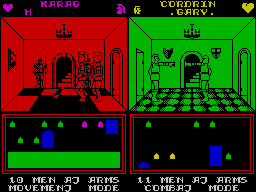
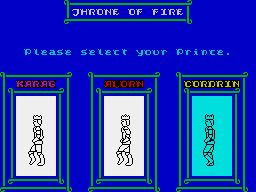

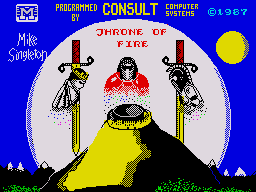
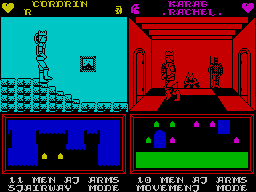

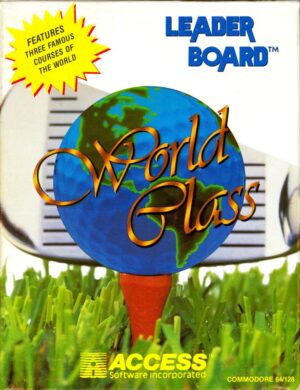

Reviews
There are no reviews yet.